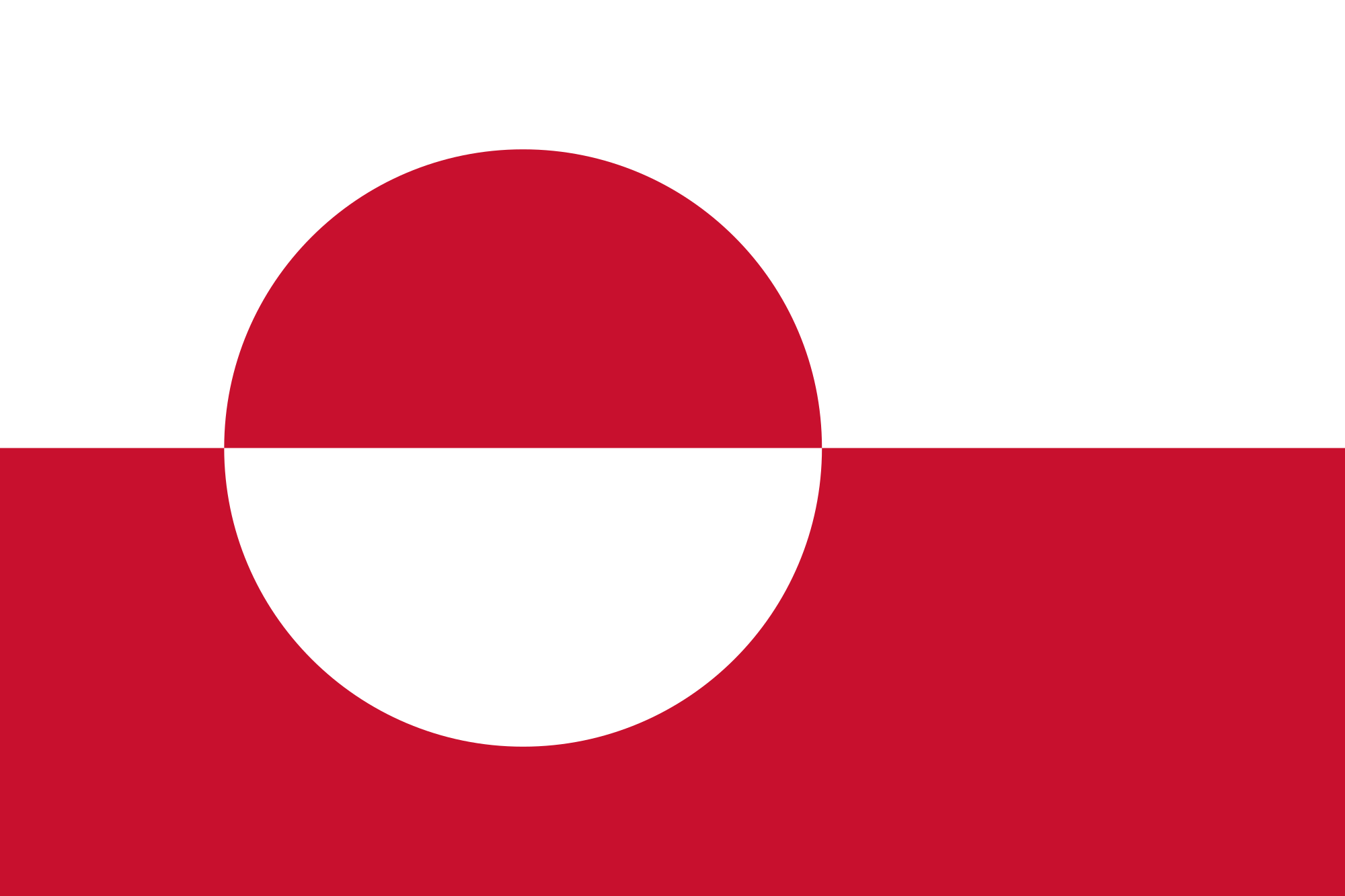Do the North and South Poles have flags? In both cases, the short answer is “kind of.” Here are the long answers:
North Pole

A popular misconception is that the North Pole is located on Greenland. While this isn’t true, some people still mean “Greenland” when they say the North Pole. Greenland became a self-governed part of the Danish Realm in 1973 and adopted its official flag in 1985. Known in local Greenlandic language as Erfalasorput, or “our flag”, it is the only Nordic country or territory flag without a Nordic cross.
As far as the actual North Pole, there are technically two of them: the geographic North Pole and the magnetic North Pole. The geographic North Pole is at 90 degrees north on maps and is where the Earth spins on its axis (although the Earth’s axis is prone to wobble from year to year). The magnetic North Pole is the location where the Earth’s magnetic field points vertically downward and is also where magnetic compasses point to when they are pointing “north”. Rarely do these poles exist in the same location at any one time, but luckily they are all in the same general area for now, an area that has been considered international waters for many years.

This would make it seem that that there isn’t a North Pole flag. Well, the answer is still “kind of” for two reasons. One reason is that there have been many expeditions to the geographic North Pole for over a century, each flying their own national flag at the top of the world. One of the most notable examples of this was a Russian research submarine that planted a Russian flag on the ocean floor at the geographic North Pole in 2007, the first North Pole flag not planted in ice.
The other reason has to do with oil. Currently, there is a debate between the U.S., Canada, Russia, and Denmark as to who has the rights to drill for oil in certain areas of the Arctic Ocean. In 2014, Denmark said that Greenland’s location gives them claim to the area that encompasses both the magnetic and geographic North Poles.
So no, the North Pole itself doesn’t have its own flag. But if other countries honor Denmark’s claim, then the North Pole is part of the Danish Realm.
South Pole
Just like in the North, there is a magnetic and a geographic South Pole. However, it is a common practice to refer to the continent of Antarctica as the “South Pole”, as it is the location of the geographic South Pole. (It was also the location of the magnetic South Pole until the late 20th century, when the pole moved slightly off-shore).
As of today, seven nations lay claim to eight different territories in Antarctica, strictly for scientific observation and study: Argentina, Australia, Chile, France, New Zealand, Norway, and the United Kingdom. Of these seven nations, Argentina, Chile, France, and the United Kingdom have unique flags for their territories while the other nations use their national flags. All but the Norwegian territories start at the geographic South Pole and radiate outward to the Antarctic coast, so it could be argued that the South Pole is shared by all of these territories.
BUT THERE’S MORE!
In 1956, the United States built the Amundsen–Scott South Pole Station right next to the geographic South Pole. It is unclear whether the U.S. lays claim to any of the ground surrounding the station, but the building does fly an American flag.
BUT THERE’S EVEN MORE!

There’s a ceremonial South Pole used mainly for photos, complete with a candy-cane striped pole and surrounded by the flags of the twelve countries who signed the Antarctic Treaty. This is located a few meters away from the actual geographic South Pole, which has a simple stake, a sign honoring the first two explorers who reached the South Pole (Amundsen and Scott) and an American and Norwegian flag. Because both of these monuments are on a moving ice sheet, they are replaced on the true geographic South Pole in a ceremony every New Years Day.

There are also several flags that were designed specifically for Antarctica. The most popular of which was designed by Graham Bartram in the late 20th century and features the Antarctic landmass on a “UN-blue” field. In 2002, Ted Kaye, author of Good Flag, Bad Flag, took Bartram’s design to Antarctica and got three bases managed by the UK, Brazil, and Ukraine to fly the flag. It is believed that Kaye’s effort made it the first non-national flag to fly in Antarctica. Also in 2002, the members of the Antarctic Treaty officially adopted a flag very similar to Bartram’s showing the Antarctic landmass with parallels and meridians found on a map on top of a darker blue field. While the treaty flag is technically “more official”, Bartram’s flag still remains the more popular flag in use.
So can we say there is a flag for the South Pole? Kind of. There sure are plenty of choices, but there doesn’t seem to be a clear answer, especially since there is no true governing body in Antarctica. In my opinion, I would love to see a multinational flag in the spirit of Bartram’s flag, but with a more interesting design than the Antarctic landmass.